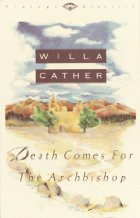
William Vollman's Europe Central was, for me, a very slow burn. I spent the first two hundred pages of this sprawling, kaleidescopic epic on the emotional sidelines, wryly observant, interested but not overly engaged. Vollman's characters, I thought, were intriguing, but also annoying. His prose was full of vivid detail, but a bit overblown. It was the kind of thing, I found myself thinking, that I would have enjoyed better in high school, when drama needed to be proclaimed from on high with cannon fire in order to get my attention. Do we really need, I wondered, another novel about World War II?
And then I realized that I had begun thinking almost constantly about the moral dilemmas presented in the novel. Vollman has devoted years to thinking about the "moral calculus" utilized by human beings in situations of extremity, about the ways in which people make decisions in crisis, and how that plays out in a larger pattern of violence and history. All that thinking really pays off as he draws his fictionalized portraits of historical figures from mid-century Russia and Germany; these are people placed in crucial but impossible situations, people to whom dilemmas are posed with no answer remotely "right," and Vollman traces their moral and emotional arcs with great care. I think Europe Central would make a perfect fiction companion to Rising Up and Rising Down, the same author's nonfiction examination of violence and its ramifications. Here, even more than in the factual case studies of Rising Up, the reader observes at close hand - from inside the subject's head, in fact - the protracted struggle to balance necessity and morality, to make sense of the insane circumstances in which he finds himself, to create and apply some version of a moral code. Since the novel spans decades - late 1930's to mid-1970's - the reader has time, too, to witness the effects of the passage of time, the slow (or, sometimes, lightning-quick) revisions that the characters must make to their moral codes under the weight of events, emotions, or simply old age.
Europe Central features a wide swath of characters, from artists and poets (most prominently the Soviet composer Dmitri Shostakovich) to generals and spies. Although I'm generally not a fan of military fiction, this book surprised me: for my money, the most compelling episodes were two long pieces devoted to generals (the Russian Vlasov and the German Paulus) who each defected to the opposite side. Vollman's portrait of two giant powers, both irrationally fixed on the idea of Total War - no retreat under any circumstances - communicates the claustrophobic plight of military professionals trained to practice battle-craft as a strategic art. The chain of command dictates that both Vlasov and Paulus must follow orders, and their leaders' commitment to Total War means that the orders will never permit retreat, even for strategic purposes. Even when their respective armies are starved, surrounded, frozen and out of fuel and ammunition, they are ordered to succeed, and punished for disobeying orders. What's more, the cult of personality surrounding Hitler means that Vollman's Paulus must never doubt the ultimate wisdom of his Führer's orders, or his entire moral universe will crumble. It's fascinating to watch this tension between Paulus's false faith and his professional's knowledge of the battlefield play out in test after test. Will he defy orders when he knows the battle is unwinnable? When he realizes that successful escape is impossible? When he understands that all his men will likely die pointless deaths? In each of these scenarios Paulus remains ferociously loyal; it is only when he witnesses the casualness with which Hitler expects him to take his own life that his internal walls begin to crumble. His ultimate decision, to allow himself to be taken alive by the Soviets, is one that would never occur to me as a betrayal, especially after the grueling fighting he led. But by his own moral lights, he has betrayed his Führer and his former self, and must conceptualize himself anew as a Russian collaborator. All of his assumptions are suddenly up for reconsideration. His bitterness at being treated so unreasonably combines with his more objective misgivings - and, of course, the pressure of the Soviet propaganda machine - and he becomes a vocal critic of the government he'd almost died to defend.
All of the characters in Europe Central are deeply flawed, if not downright unlikeable. After all, many of them are working to strengthen two of the most oppressive nation-states in living memory: Hitler's Germany and Stalin's Soviet Russia. Many of the episodes are narrated by semi-faceless mid-level functionaries in the Nazi or Communist parties, men who have been completely indoctrinated in the nonsensical bigotry of the party line. Even those characters who don't support their country's favored brand of totalitarian oppression are endowed by Vollman with irritating mannerisms and/or infuriating qualities; there are no kind, easy, socially enlightened resistance-fighter heroes for whom the reader can cheer. Yet, with a few exceptions, even the most unlikeable people in the book evoke, at times, a spark of sympathy in the reader. And although eight hundred pages of unlikeable people is an understandably hard sell, I honestly believe the characters' deep complexity is what makes the novel so compelling.
World War II is often viewed, especially by Americans, as "the good war," a clear-cut battle of the Light of freedom and tolerance (in which we see ourselves) battling the Dark of oppression and bigotry (Hitler's Germany). Vollman strips away this simplistic vision by the simple act of looking at the war's eastern front: between two oppressive, power-mad totalitarian regimes, between two all-seeing surveillance and propaganda machines, between two starved wastelands across which humans are transported to secret locations and subjected to atrocities, the choice is much less clear. Caught between two such choices, it takes remarkable strength of vision to imagine, let alone fight for, a third option, even when that third option is a dire necessity. As he paints these characters' struggles of loyalty - between Hitler and Stalin, between the collective and the self, between the party line and their own integrity - Vollman blurs all lines that separate one side from the other. A spy who uses his racial privilege to join the SS and expose their crimes, yet who fails to obtain international cooperation - are his hands clean? A composer living under seige, whose children are starving, and who wants to believe that music can actually help turn the tide of the war, writes a program symphony that tows the party line - to what extent has he compromised his integrity? A Soviet general, soured on Stalin's machinations, who allows himself to be convinced that collaboration with Germany will enable him to fight for the liberation of Russia, and who tells himself that rumors of concentration camps are another example of Soviet slander - where does he fall on the moral spectrum? And how can my own sympathy as a reader be more with a German general than a conflicted Soviet artist? In observing the progress of each of these characters through their personal decision-making processes, and the vast moral gray areas involved, one begins to question one's own black-and-white view of the Second World War. Indeed, Vollman ends the book with a meditation on black, white, and shades of gray.
I've noticed that many people recommend this novel for World War II history aficionados, but I think that's slightly beside the point. Vollman is writing fiction; he creates full emotional lives and narrative voices for his characters such that the final products could only be suggested by, not true to, the historical record. History buffs who cringe at factual liberties and poetic license would be well-advised to stay away. No, as I see it, the people who ought to read this novel are those intrigued by the human psyche in times of great crisis, or fascinated by the cycle of violence on a grand historic scale as well as a personal, internal one. The truly thoughtful reader will also learn from observing the shifting sands of her own sympathies as she reads.



